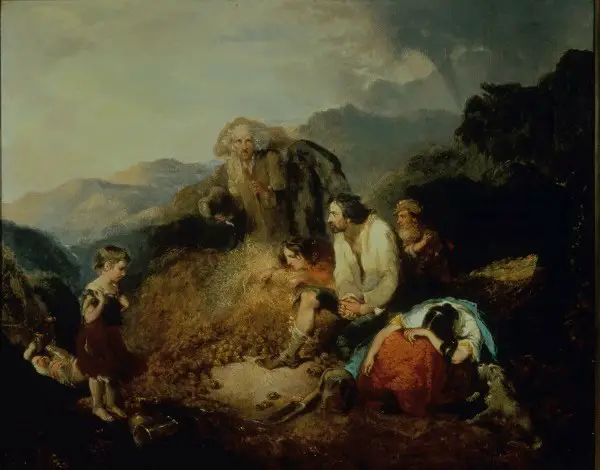 1845, on the island of Ireland, a fungus organism by the name of Phytophthora infestans spread faster than wildfire, ruining over 80% of potato crops. It was quite a bad time for Ireland as the economy was at an all-time low and most of the population was made up of farmers. The land was harsh and unforgiving therefore it was very difficult to grow other vegetables to eat rather than potatoes. At the same time, the animal stock was scarce and with the high volume of foxes running around it was very difficult to keep them safe.
1845, on the island of Ireland, a fungus organism by the name of Phytophthora infestans spread faster than wildfire, ruining over 80% of potato crops. It was quite a bad time for Ireland as the economy was at an all-time low and most of the population was made up of farmers. The land was harsh and unforgiving therefore it was very difficult to grow other vegetables to eat rather than potatoes. At the same time, the animal stock was scarce and with the high volume of foxes running around it was very difficult to keep them safe.
As the Irish population at the time relied heavily on potato crops as pretty much the only source of food it was a disaster! For the next seven years, until 1852 — when the fungus disappeared from the land — over one million lives were taken by starvation.
However, this problem is much more complex than it seems at first glance as Ireland was in quite a delicate situation where they did not have much control over their country nor their governmental system in order to help the population. This is why we need to go back to the end of the 17th century to see the possible causes that lead to the famine or to a potential hand that could have — or better yet said, should have — helped the Irish population in such a dire time.
Ireland’s situation in the early 1800s
With the formal consent of the Acts of Union in 1801, Great Britain governed Ireland as a colony. This was bad news for Ireland as they knew the British would abuse their people with high taxes and would not allow them to either own or lease land.

Most of the Irish population was pretty much forced to work as tenant farmers which meant that they had to work really hard in order to pay rent to the landowners upon whose land they grew their crops. An interesting point to be made is that at the time when the potato famine started it was almost 100 years since the potato had been introduced in Ireland by a high-ranking British social class known as the Landed Gentry.

As it was quite easy to grow it had become a staple food for the Irish population, especially during winter when food was even more scarce. As mentioned before, the livestock in Ireland was only owned by the rich which were not even be Irish but Anglo-Saxons who had come to rule the poor with their high financial power in a poor economy.
The Great Hunger 1845–1852
By the beginning of 1845, there was a sudden fall of almost 50% of potato crops. Many of the elder farmers believed it was some sort of curse rather than an infestation upon the crops themselves. Now, I know that most of you are probably wondering if there were other foods available within Ireland at the time and the truth is there were. There was actually quite a high production of honey and the fishing industry was flourishing, however, as the economy in Ireland was at its lowest point in the country’s history the population could not afford such foods.
The problem was much bigger as they were not producing enough crops, therefore not selling enough crops to actually pay the rent for the land. This meant that in most cases there were no potatoes left from the harvest for their own consumption. What is more ironic, in my opinion, is that by 1848 (three years into the famine) the export of other commodities was at an all-time high in Ireland which meant that workers were being paid almost nothing.
In 1849, many Irish families started to immigrate over to England in order to manage to survive through any means possible. Some even went as far as migrating to North America in order to actually survive because they knew that on Irish soil they were better off dead. It seems that no one around the world actually cared about this large number of people dying but at the same time it wasn’t as if many other nations apart from great Britain and North America knew about the starvation from which the Irish were perishing.
By 1852 the fungus which was killing the potato crops was disappearing from the scene. By this point over one million Irish children, women, and men had died from starvation as well as other related causes such as sickness provoked by starvation. Also, another million had emigrated to either England or North America. In the process of their immigration, it was reported that another 50,000 have died due to various reasons.
I believe that from this terrible event we need to learn to care about the world hunger that is taking place in the 21st century. If we won’t take care of our own kind then who will?
Avid Writer with invaluable knowledge of Humanity!
Upcoming historian with over 30 million views online.
“You make your own life.”





